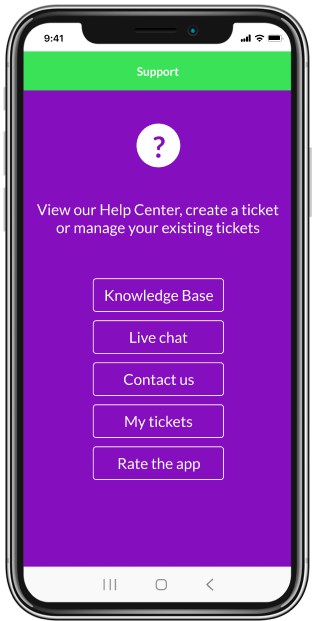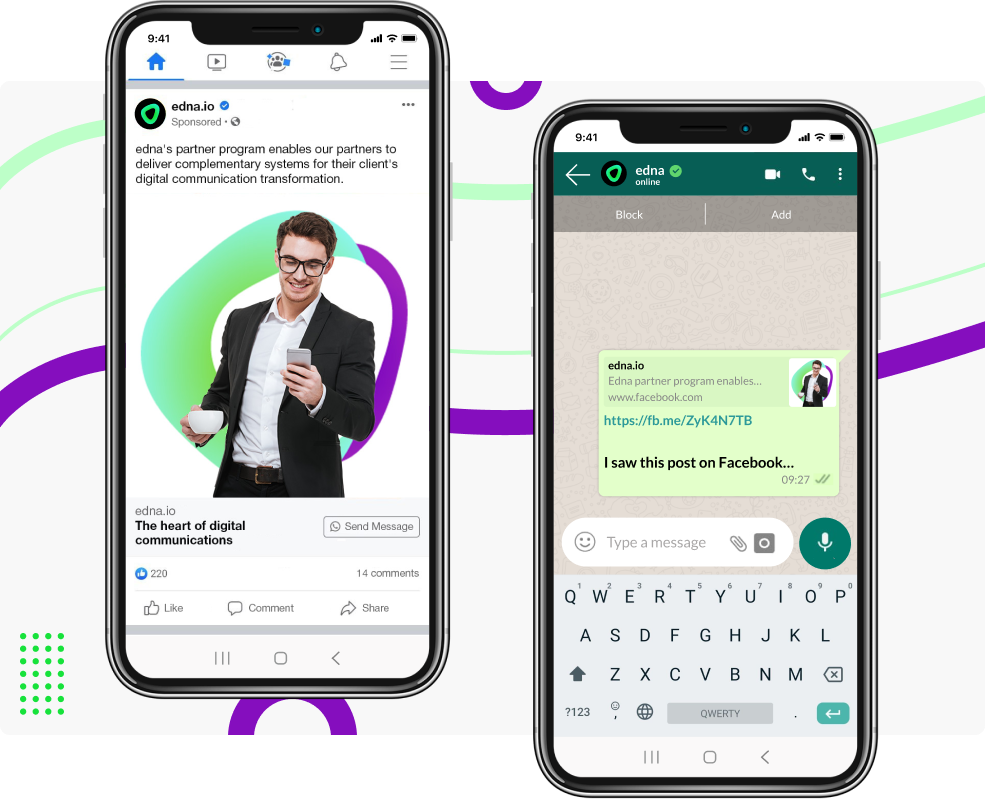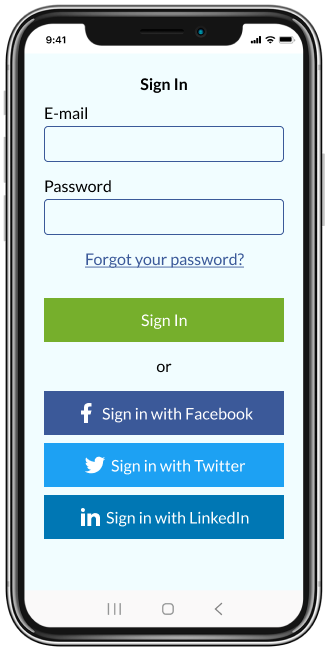A Quick Guide to Getting Your Business Mobile-Ready for Today’s Digital Natives

The world is migrating to mobile — from hailing a cab and ordering a pizza to seeking healthcare, people are turning to their smartphones for almost any and every service. Today’s digital natives discover products, read mails, make purchases, give feedback, and seek customer support, all on the small screen. In Q1, 2021, mobile devices generated 54.8 percent of the global website traffic, and this will only grow over time . Mobile has long surpassed the use of desktops — many people have ditched computers entirely and moved on to mobile phones.
This explosive growth of mobile technology has disrupted existing business practices, and compelled brands to re-evaluate their customer engagement strategy. They know that to future-proof their business, they will need to meet their customers where they are — that is, on their mobile phones — and deliver an outstanding brand experience no matter what the channel. A Google study shows that 46 percent of customers are unlikely to purchase from a brand in the future if they have an interruptive mobile experience . Also, many customers recommend brands only based on how good their mobile experience is. This means brands will need to focus on creating an outstanding mobile experience that is easy to navigate, pleasing to look at, and delivers value to the end user — being mobile-driven is now a critical business need.
Enterprises that are succeeding at this are seeing high levels of mobile engagement and an increase in mobile-driven revenue. Others are struggling to support customers on mobile. This paper serves as a primer for those getting started on their mobile-first journey.
A Roadmap for Creating the Best Mobile Experience for Your Customers
To create an optimized mobile experience for customers, businesses need to undergo significant strategic shifts not just in terms of redesigning their brand experience for mobile, but also in terms of focusing on how to empower customers with SMART products that make it easier for them to complete tasks with minimum friction on a small screen in an omnichannel environment.
Emphasize a Mobile-First Design Over Desktop Design
Many businesses start with designing for a desktop interface first, and then try to optimize it for the mobile versions later — this needs to change. The mobile-first design mindset is the way to go. This is because there is an inherent problem with a desktop-based design. Many potential customers who attempt to register on a desktop-optimized site from their smartphones or simply browse products find the mobile interface difficult to navigate. They simply move on to a competitor’s website, resulting in loss of reputation and business.
What companies need are mobile-native tools designed for the small screen. Businesses will need to start designing for small — develop minimal text with vertical creative formats that are easy for website visitors to see on a small screen. No matter what the mode of interaction — live chat, social networks (Instagram, Twitter, SnapChat, or Facebook), messaging platforms (Facebook Messenger, WhatsApp, Apple Business Chat), chatbots, emails, push notifications, or mobile wallets — businesses should ensure that they are highly mobile responsive.

They should especially focus on the following design elements:
| Optimize Images So They Load Quickly | Surveys show that people turn off a web page if it takes more than three seconds to load. To ensure quick loading: – Use smaller-size images – Optimize image delivery – Use correct file formats – Implement the lazy loading technique |
| Improve Loading Speed for All Web Pages | Select a web host that has the capability to help the site load fast consistently. Also deploy Google’s Mobile Speed Test Tool to check loading speed |
| Simplify Navigation | – Use easy-to-see navigation headers – Limit the number of steps taken to complete a task in an app – Create simple menus offering multiple tiers of customer support so users can easily locate and access the kind of support they need – Provide easy access in the form of buttons for popular tasks that are accessible from anywhere |
| Take Out Excess Pop-Ups and Plugins That Clutter the Message | Space is a constraint on the small screen, so it’s better remove all excess clutter to help customers get straight to the tasks they want to perform |
| Develop Voice Search Capabilities | Voice search is getting increasingly popular. Optimize mobile web pages for voice search, focusing on long-tail keywords and complete phrases |
| Create A Mobile App | Besides other benefits, apps can help in marketing efforts by enabling push notifications that are fully mobile-native |
| Create Mobile-Friendly Emails | – Use short subject lines and body copy – Keep preheader text short – Leave open space around CTA – Use smaller images and optimize each – Mention CTA in larger font and highlight it – Test emails across multiple devices |
Businesses should test the mobile-friendliness of their design using testing tools. They should combine on-mobile experiences with in-store interactions, online ads with interactive maps and voice search with local-based SEO to get the most out of their mobile experience.

Develop a Customer Engagement Strategy
To build a successful mobile-first presence, business owners need to slice and dice their data to see how their customers are interacting with their brand. They should analyze the volume of traffic coming in via different devices and browsers, compare conversion rates of mobile and desktop devices, identify at what stage customer attrition is happening, and so on. They should imagine themselves as the customer, try to purchase their own products on mobile and analyze how the experience feels like.
- How much time are customers spending on the website?
- Which device and browser are they using?
- Are customers able to resolve queries quickly on mobile chat?
- Can they seamlessly hop from one channel to the next to continue engagement with the brand on their mobiles?
- Do businesses have native mobile-first channels such as their own app, social messengers, SMS, and mobile wallets to enable seamless conversations and transactions throughout the customer’s lifecycle?
- Can they create value their customers won’t find elsewhere?
Business owners must understand their customer’s preferred journeys and focus on ways to improve the mobile experience for each touchpoint. When companies deliver a great mobile experience, they build retention and brand loyalty, which improves bottom lines.
Be Channel-Agnostic but Mobile Native
These days, customers are present on multiple channels, some of which become hugely popular while others fade away. At the end of the day, it is the customer’s mobile phone that will connect them to all other channels of engagement. So what matters is how well-connected they feel throughout their overall journey from discovery to purchase. Business owners must focus on identifying the customer’s most preferred channels first and try to offer them a stellar mobile experience on each of those channels. To ensure a delightful experience for all customers, they must focus on the following:
- Use Unique Device Capabilities to Boost Success: Enterprises must consider taking advantage of unique smartphone capabilities to boost sales and customer support. For example, many marketers leverage the smartphone’s GPS functionality to target customers when they are at specific locations. Also, some brands offer an additional messaging channel, Apple Business Chat, for all their iPhone users and RCS for Android users. Such benefits are unique in the sense that they cannot be achieved with other operating systems.
- Develop Interconnections Between Channels: Connecting different communication platforms in the form of links is a great way for enterprises to boost engagement. Sharing their official WhatsApp contact on another platform, say through Facebook ads or hyperlinks on the official website, does wonders in attracting increased traffic. It gives people more options to connect with the company, increasing user convenience. Businesses can also deploy unified chat platforms that create interconnectivity between chats of the same customer taking place across different channels. Support agents can view all these chats together in one place, which helps them understand their customer’s history better and offer them better support.

Onboarding and Supporting Customers on Mobile
In today’s mobile-first world, engaging customers on their phones goes much beyond overhauling the design elements to fit the screen. It’s as much about simplifying and optimizing the entire customer journey, from onboarding to retention to support, on mobile.

Create a Simple, Painless Onboarding Flow
Businesses that want customers to sign in to create accounts during the purchase cycle can improve user sign-up and retention by simplifying the registration process. They should keep the sign-up process simple by keeping required fields to a minimum. Users should be given the option of logging in using their Facebook or Google accounts, rather than asking them to create separate user names. Such quick and hassle-free onboarding makes the process convenient for customers, increasing conversion rates.
Be Present on Social Media Channels to Increase Engagement
Social media sites drive huge traffic for businesses. Facebook alone has 2 billion monthly active users. Most people check their social media accounts from their phones, so it makes sense for businesses to be present on these channels to engage with customers on a day-to-day basis — they can share posts on new product launches, run promo campaigns and loyalty programs, and answer user queries in real time, all of which enhance brand reputation and increase loyalty.
Help Users Complete Tasks That Brought Them to Your Page
Whether users visit a company’s app, social media page, or website, they are there to accomplish something — maybe to discover a product, ask questions, or make a purchase. Whatever it is, businesses must be prepared to help them achieve their objective. They need to provide all vital information and avenues for customers to communicate back with the brand on multiple channels and reduce intervening steps to a minimum. They should also deploy tools and technologies that enable customers to buy products, book or reschedule a service, and make payments securely in the same channel.
Optimize Live Chat for Mobile
These days people prefer to message businesses from their phones, and they want the experience to be as convenient as chatting with a friend. So it’s vital for businesses to optimize live chats — originally designed for desktop use — for mobile. Many businesses are deploying in-app mobile live chat or incorporating popular messaging apps such as WhatsApp, Facebook Messenger, WeChat, and Apple Business Chat to provide chat support.
In-app chats as well as messaging apps are best suited for mobile interfaces and can provide a seamless experience for users even when they switch from one device to the other. What’s more, following up on queries is easy as the full chat history is always available. Messaging apps and in-app live chat also have the added functionality of sharing quick reply options with customers so that they only need to select the relevant option among multiple choices, which reduces typing efforts for customers. Also, messengers like WhatsApp allow users to be divided into different segments, which the business can target with bulk messaging, something desktop live chat cannot accomplish. Finally, customers find it easier to reach businesses via messaging and resolve their queries faster.
Empower Customer Support Teams to Serve Better
By being mobile-driven, businesses can empower their support teams to handle incoming customer requests at any time and from anywhere. Teams can easily view customers’ profiles, identify which channel the message came from, and view the entire chat history and communication habits of the customer for each channel to provide better support to the customers. This helps to resolve tickets faster and increases satisfaction for both employees and customers.
Encourage Customers to Provide In-Chat Feedback
Brands should request users to provide feedback after every chat communication happening on any channel. This helps businesses to assess the channel’s performance, understand the customers’ needs as well as chat patterns, and use this information to devise ways to improve communication over different channels.
Closing Thoughts
With the world transitioning to mobile and millions of dollars at stake, brands will need to make the mobile a strategic priority. As they embark on this journey, however, they will need to remember that this shift will not be achieved overnight, but will require them to take small steps as they gradually redesign their mobile experience. They will need to regularly monitor the success of their initiatives, upcoming technologies, emerging channels, and shifts in customers’ online behavior and take in all customer feedback while deciding on adjustments to make as they scale their mobile offerings.
edna is a leading digital communication solutions provider that is revolutionizing the way organizations connect and converse with consumers. For more than 15 years, we have been helping companies to use advanced communication technologies to orchestrate streamlined, programmatic omnichannel communications over all major social messengers, live web and in-app mobile chat, PUSH messaging and SMS. edna is an official service provider for WhatsApp Business, Apple Business Chat, and Viber for Business. We work with 550+ enterprise clients that include leading organizations in Retail, FMCG, Banking, Insurance, Air Travel, Telecom, Hospitality and Healthcare and process 4 Billion+ messages every month. Learn more about our offerings at edna.io
Submit details below to download white paper
Why Read It:
- Find out which design elements help to optimize viewing on mobile screens
- Discover ways to onboard and support customers easily
on mobile
- Learn how to improve the end user’s mobile experience across every channel
- Know the roadmap for creating the best CX



